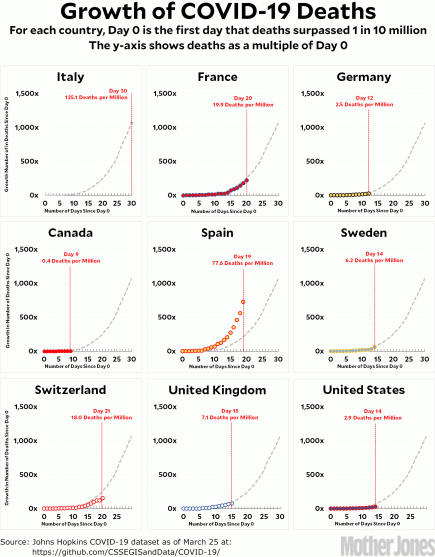A new report out yesterday from the European Centre for Disease Prevention and Control (ECDC)—the EU’s equivalent of the US Centers for Disease Control and Prevention—suggests that the coronavirus pandemic probably won’t just disappear in the summer months.
The report notes that other strains of coronaviruses, which cause about 10-15 percent of common colds, peak between December and April. They mostly go away in the summer because humidity suppresses respiratory immune defense mechanisms, which means the viruses don’t lead to the debilitating respiratory symptoms from which people are dying.
But so far, the research does not show that the same is true of the novel coronavirus that’s creating this pandemic.
[B]ased on preliminary analyses of the COVID-19 outbreak in China and other countries, high reproductive numbers were observed not only in dry and cold districts but also in tropical districts with high absolute humidity, such as in Guangxi and Singapore. There is no evidence to date that SARS-CoV-2 will display a marked winter seasonality, such as other human coronaviruses in the northern hemisphere, which emphasises the importance of implementing intervention measures such as isolation of infected individuals, workplace distancing, and school closures.
This research flies in the face of the claims coming out of the Trump administration. At President Trump’s Fox News coronavirus town hall on Tuesday, he sent the message that the coronavirus will abate in the spring months, saying it’s possible to have the country “open by Easter.”
Trump can't seem to stop talking about his fantasy timeline for the coronavirus—even if it means contradicting his own administration. pic.twitter.com/LK12Dl0EWg
— Mother Jones (@MotherJones) March 26, 2020
Later in the town hall, Deborah Birx, the response coordinator for the White House Coronavirus Task Force, made assumptions that this coronavirus will be seasonal:
[U]ntil we get through this current pandemic, if it has seasonality, which we hope and believe it could, if it gets through this current season, it will be in everybody’s best interest to do as the President has recommended, our work on vaccines, our work on additional therapeutics and really getting to both pre and post prophylaxis. So that the healthcare providers can get a shot potentially that will protect them, we would call it pre-exposure prophylaxis. All of those things are being worked on to prepare us for the next season. So we’re focused today on what we need today and to get through this current epidemic, and then we’re also getting prepared in case it comes back in the fall or in case it comes back in the fall of 2021 when we’d have a vaccine.
Anthony S. Fauci, director of the National Institute of Allergy and Infectious Diseases, shot back at President Trump’s “Easter” statement in an interview with CNN’s Chris Cuomo yesterday.
“You’ve got to be realistic and you’ve got to understand that you don’t make the timeline, the virus makes the timeline,” said Fauci.













